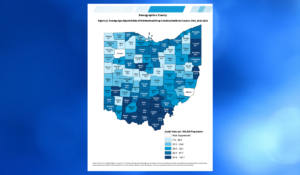Chow line: Is it food poisoning?


Chow line: Is it food poisoning?
I had stomach cramps not long after eating food I typically don’t eat. How do I know if I had food poisoning or if it was something else?
The symptoms of food poisoning vary depending on the type of germ to which you’ve been exposed, but there are some common signs that can indicate whether you’ve been exposed to a foodborne illness.
The most common signs include stomach cramps, upset stomach, nausea, vomiting, diarrhea, and fever. Some bacteria, such as Listeria can cause flu-like symptoms.
It’s important to note that symptoms of food poisoning can range from mild to serious and that some of them can come on as quickly as 30 minutes after you eat or as long as four weeks after you’ve eaten something that contains a foodborne pathogen, according the Centers for Disease Control and Prevention.
The time it takes for symptoms of a foodborne illness to manifest really depends on the germ. For example, according to the CDC, if you consume foods that are contaminated with
- Staphylococcus aureus (staph), symptoms could appear as soon as 30 minutes to six hours later.
- Clostridium perfringens, symptoms could appear as soon as six to 24 hours later.
- Norovirus, symptoms could appear as soon as 12 to 48 hours later.
- Salmonella, symptoms could appear as soon as 12 to 72 hours later.
- Clostridium botulinum (botulism), symptoms could appear as soon as 18 to 36 hours later.
- Vibrio vulnificus, symptoms could appear as soon as one to four days later.
- Campylobacter, symptoms could appear as soon as two to five days later.
- E. coli, symptoms could appear three to four days later.
- Cyclospora, symptoms could appear one week later.
- Listeria monocytogenes, symptoms could appear one to four weeks later.
Some people may experience symptoms that last several hours or several days, said Sanja Ilic, the state food safety specialist for Ohio State University Extension. OSU Extension is the outreach arm of The Ohio State University College of Food, Agricultural, and Environmental Sciences (CFAES).
“While most people experience only a mild illness, people with underlining conditions that weaken their immune system may experience severe outcomes that require them to be hospitalized,” she said.
So how do you know if you should see a doctor for your symptoms? The CDC advises people to seek medical attention for severe symptoms, including:
- Blood in your stool.
- A high fever, typically over 101.5 degrees Fahrenheit, measured with an oral thermometer.
- Diarrhea that lasts more than three days.
- Frequent vomiting that prevents you from keeping down liquids, as this can lead to dehydration.
- Signs of dehydration, which can be marked by a decrease in urination, a very dry mouth and throat, or feeling dizzy upon standing.
Chow Line is a service of The Ohio State University College of Food, Agricultural, and Environmental Sciences and its outreach and research arms, Ohio State University Extension and the Ohio Agricultural Research and Development Center. Send questions to Chow Line author Tracy Turner, 364 W. Lane Ave., Suite B120, Columbus, OH 43201, or [email protected].









